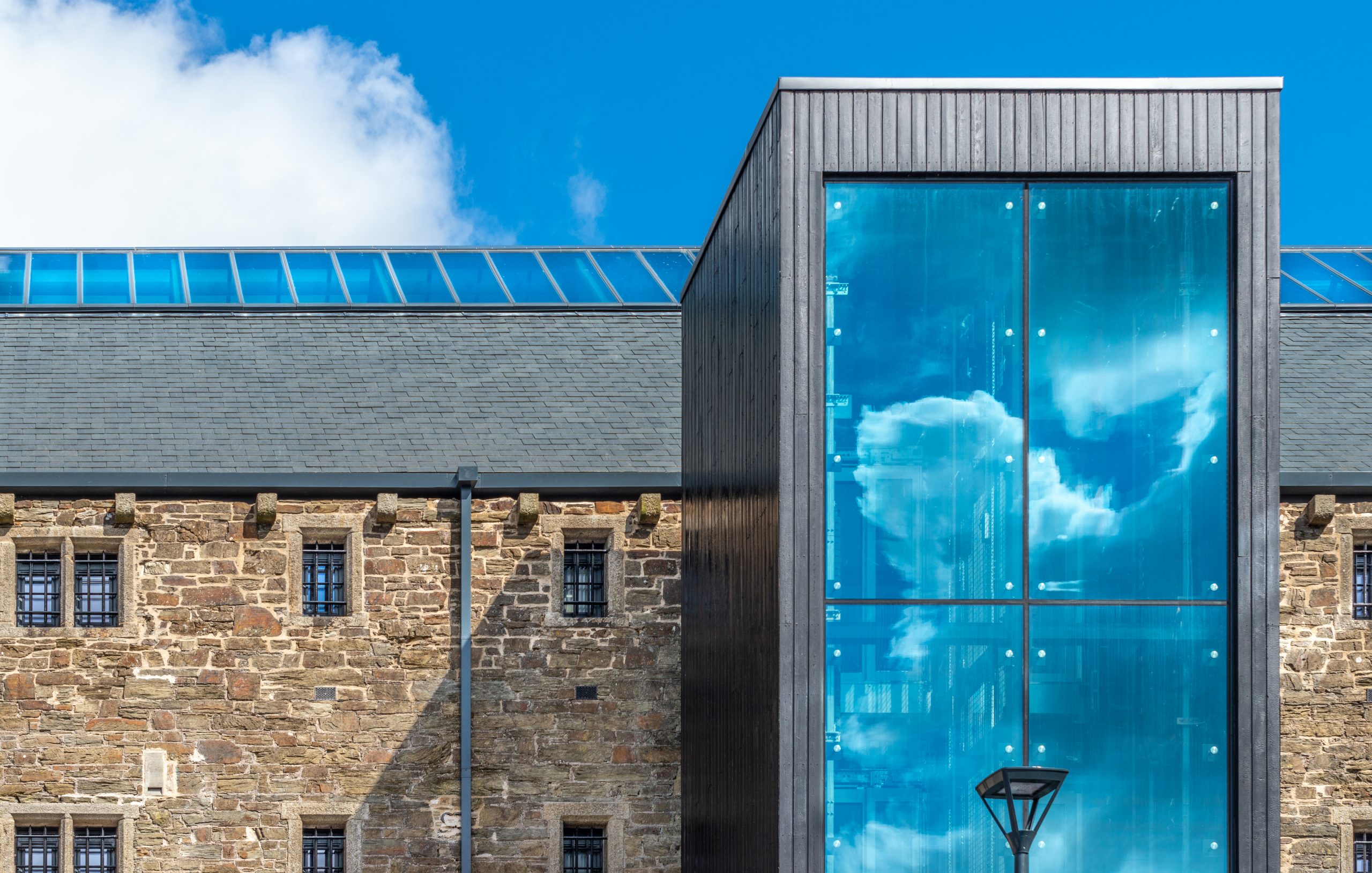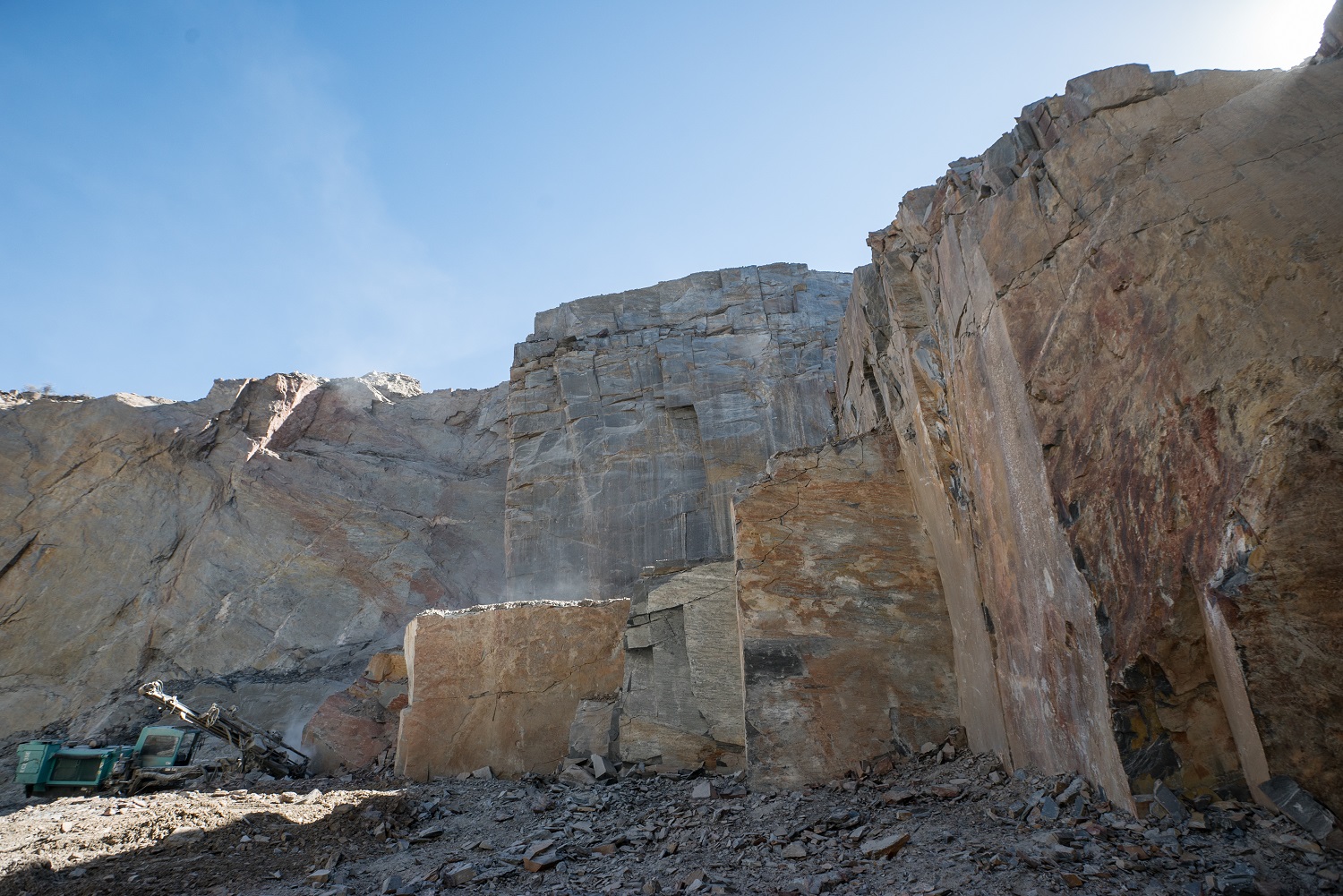Slate is the result of hundreds of millions of years of geology.
Originally, millennia ago, it was a soft rock like shale or mudstone. Then it was buried, and, subject to incredible heat and pressure over almost unimaginable lengths of time, it became slate.
Those processes gave it the characteristics that made it so popular with human beings when we came along several hundred million years later – its looks, its strength, and its ability to retain both even when its split extremely thin.
In one form or other, in fact, slate was in use from the earliest periods of human history. Neolithic hunters used it to tip wooden arrows and spears.
But it wasn’t for tens of thousands of years more that we started to realise slate’s potential for less grisly, more constructive purposes.
Forts, abbeys and castles
We know that the Romans quarried slate. They invaded Britain for the first time in 43 AD, and five years later they reached Wales for the first time. The Roman fort of Segontium, the biggest and most important in the region, had a slate roof.
In the centuries that followed, slate became a common site on the roofs of military buildings – prized for its robustness.
Calder Abbey in Cumbria, founded in 1134, has a slate roof. So did Conwy Castle, which King Edward I had built between 1283 and 1289 at a cost of £10,000 (over £7m in today’s money).
And in 1445, 130,000 slates were ordered from the Isle of Bute to repair Dunbarton Castle.
But for hundreds of years, it was only the wealthiest institutions – the monarchy and the church – that could afford slate.
At the time, quarrying and transporting it was a dangerous, arduous process – it was laboriously dug out of the ground by men with hand tools, then moved by horse and wagon.
The first recorded use of a slate roof on a private house wasn’t until around 1300 in North Wales – and you can bet that the householder in question wasn’t short of a few pennies.
Technological advances
Slate became a little easier to get your hands on as quarrying technology gradually advanced.
Eventually, gunpowder was used to repeatedly blast slate into more manageable chunks, which were then taken away to be split into thin pieces – a much quicker method of slate extraction, albeit one that had an unfortunate tendency to much of the material it produced and was extremely dangerous for the workers involved.
It wasn’t until the nineteenth century, though, that the slate boom began in earnest.
In Spain, which even today still accounts for around 90% of Europe’s roofing slate, they developed new techniques that made quarrying spanish slate more efficient than ever before – and for the first time, slate became a cost-effective solution for roofing the homes of ordinary people.
Britain’s rapid industrialisation – eventually followed by that of Europe’s other big powers – both created a huge demand for slate, and made it easier than ever before to transport.
With the invention of the steam engine, slate could be moved around the country far more effectively than it ever could by horse and cart – and as a result, slate roofs became a common site throughout Victorian Britain.
Decline
By the early 1900s, however, demand began to decline – initially hit by the First World War, during which slate quarrying was declared a non-essential industry, then the Second, when strict controls were placed on what new buildings could be constructed.
Another big challenge was the rise of synthetic alternatives to slate – nowhere near as nice to look at, but far cheaper to produce. Compared to clay, asbestos or concrete tiles, slate was expensive and quickly fell out of favour.
But like a lot of traditional materials that lost out to man-made alternatives during the twentieth century, now, many decades later, slate is undergoing somewhat of a resurgence.
Resurgence
Just like many homeowners are turning back towards the traditional timber windows they originally swapped out for now-ubiquitous uPVC, slate is finally getting the recognition it deserves as an exceptional roofing material.
 Today, a quality, expertly-installed slate roof can last as long as a century – two to three times as long as many alternative roofing materials. While it’s more expensive than some of the synthetic options, when you account for longevity, it’s by far the most cost-effective.
Today, a quality, expertly-installed slate roof can last as long as a century – two to three times as long as many alternative roofing materials. While it’s more expensive than some of the synthetic options, when you account for longevity, it’s by far the most cost-effective.
And the looks are incomparable. In the centuries to come, different technologies will appear, and different materials will rise and fall – but it’s for that reason more than any other that there will still always be demand for natural slate roofs.
If you’re interested in learning more, please contact us or even request a quote, should you be interested in any of our fantastic slates.


